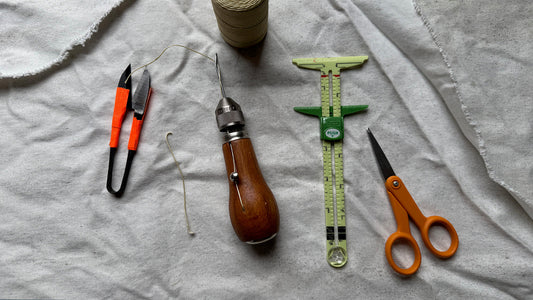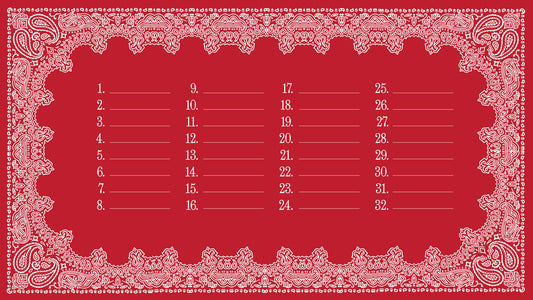
Evan Gleason loves to make things. He particularly loves to sew. I don't know anyone who finds more joy in making things. Evan and I worked together at Best Made, he is a bag and apparel designer, and during the pandemic after I left Best Made, we would often speak about making things. Evan's sewing machine would come up in these conversations: a Singer 301A.
It was always a relief to pick up the phone and listen to Evan recount the intricacies of a suit jacket he was tailoring for himself, or an old shirt pattern he had dusted off. I asked him if I should I learn to sew. And without pausing he said I first needed a 301A. He spoke of his with such reverence. The sewing machine — in and of itself — would inspire greatness. A week later Evan happened upon a mint 301A.
My 301A arrived on September 17, 2021. Before a single stitch could be cast, I had to prime the machine with thread, passing it through a Rube Goldbergian circuitry of arms, tension wheels, and ultimately the eye of the needle. For weeks I had to consult the manual to perform this most basic operation. I had no idea how the 301A worked, how a stitch was formed, how its needle passed a thread down through a second bobbin thread, that would catch and create a knot under the face of the fabric. A set of "feed dogs" would grab the fabric and move it forward (or backward), readying the material for the next stitch. Every stitch I made was some small miracle in my beginner's eye. The first thing I made was a pocket: a flat piece of fabric, folded in the middle and stitched down two sides with an opening on the top. "The miracle pocket."
The manual for my 301A was published almost 70 years a go, when my sewing machine was made. I am probably not the first beginner to frantically thumb through its pages. I am probably not the first to fashion something seemingly miraculous. There are plenty of sewing machines being made today. I could have purchased a brand new one. I don't know if a new machine would outperform my 301A. My 301A performs great, and I love it for this, and so many other reasons.
Postscript: There isn't a single tool that I have spent more time with than a computer. I have a laptop and a desktop, both Apple products. Just two of the many computers I've owned. I used to take my computers to be repaired at Tekserve on 23rd street in New York City. That was always a trip, and maybe one of the more evocative computer-associated associations. I don't have any good stories to tell about them. They are probably all in a landfill, or pillaged for parts. I don't look back on my computers with any pride or ill will. Now that I think about it, I don't think about my computers much at all.
Notes on the Singer 301A:
-
The first slant needle sewing machine (9 degrees slant)
-
Made for the 100th anniversary of Singer
-
Made in Anderson, South Carolina
-
There were 690,000 301A machines made between 1952-57
-
Came in 3 colors: soft beige, black, and oyster-white
-
Came with many useful attachments
-
Made of die-cast aluminum
-
Carrying handle
-
vertical rotary hook and bobbin case
-
up to 1600 stitches per minute
Attributes:
-
Slant shank design makes it easy to work with and see work
-
Lightweight, portable, and extremely sturdy (only 16lbs)
-
Came with an internal light (The Singerlight) that illuminates the surface
-
The reverse feeding mechanism makes it easy to back-tack and fasten the end of seams
-
First cabinet and portable all-in-one machine
Name:
The "A" in 301A stands for Anderson. Anderson, South Carolina is where the 301A was manufactured. This plant was built and dedicated to 301A production. 301 is the stitch type defined by the US government standards manual.
Stitch:
The 301A stitch is reversible and looks the same on both sides. It is a tight stitch formation, a very versatile stitch that consumes the least amount of thread and has a smoother hand feel than most stitches. The stitch type 301 is defined in the US Government specification booklet 751: "The 300 stitch class includes stitch types that interlock a needle and thread with a bobbin thread by the use of a hook or shuttle mechanism. Because these threads are interlocked rather than inter-looped, the 300 class is better known as the "Lockstitch" class of stitches."
Credit: Special thanks to the folks at the 301A website. Learn more.

